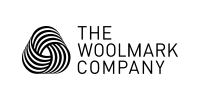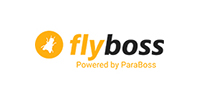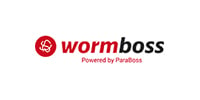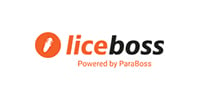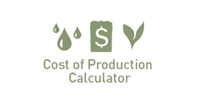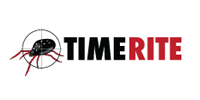Refining lamb marking – preparing for peak performance
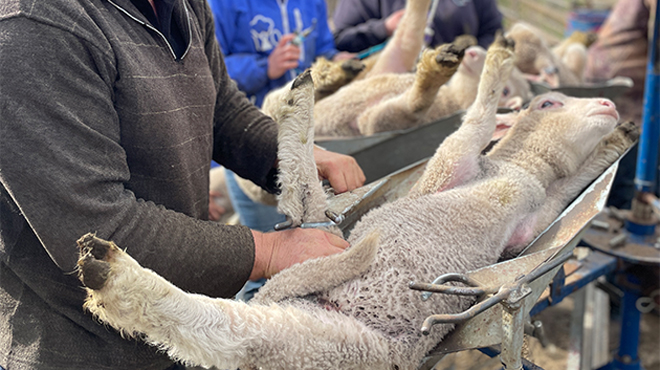
As a busy day in the annual calendar, forward planning is essential in ensuring a successful lamb marking. Proper preparation sets you up for a smoother operation with less disruption and better post-marking results. In this article, AWI Extension NSW project manager, Megan Rogers, takes us through the three essential principles that underpin a successful marking operation: maximising hygiene, minimising stress on sheep, and maximising recovery rate.
Author: Megan Rogers, AWI Extension NSW
Lamb marking mastery
Lamb marking is a critical operation in the on-farm annual management calendar. It is very much like a yield mapping day where the previous years’ management is delivered in the number of lambs at marking.
Because there are often many jobs happening concurrently during lamb marking, forward planning is essential to ensure that the operation runs smoothly, all sheep are handled with efficiency, stress is kept to a minimum (both for the sheep and the humans), and minimal disruption is caused to the ewes and lambs. The less disruption to the ewes and lambs, the better the results in the post-marking period.
AWI, in consultation with WoolProducers Australia and Livestock Contractors Association, have published a guide called Plan, prepare and conduct best welfare practice lamb marking procedures that outlines current best practice for marking.
In this guide, three essential principles underpin the success of lamb marking:
- Maximise hygiene
- Minimise stress on sheep
- Maximise recovery rate.
These three principles, in addition to closely following the best practice procedures, will ensure a smooth operation with minimal disruption to the ewe and lambs. It seems like a very basic concept, however it is always worth pausing to review your lamb marking practices and opportunities to improve the process for you and your sheep.
Anaesthetics and analgesics for husbandry operations
The development of effective and practical anaesthetic and analgesic treatments for lambs has been a critical advance in alleviating the pain and distress lambs experience at marking.
The use of anaesthesia and analgesia contribute to post-marking recovery. The use of both anaesthesia (faster acting, shorter lasting) and analgesia (slower acting, longer lasting) provides the best results for lamb welfare at marking.
The AWI Anaesthetics and analgesics at lamb marking fact sheet provides growers with information on the available options for use during lamb marking operations.
NLIS eID ear tags
The National Livestock Identification System (NLIS) is Australia's system for the identification and traceability of cattle, sheep and goats. All sheep born on or after 1 January 2025 must be fitted with an approved NLIS electronic identification (eID) device before leaving their property of birth. The eID devices must be approved by the NLIS so that stock can be individually identified and traced through the NLIS database.
Integrity Systems Company (ISC) manages and delivers NLIS. ISC provides a Handy contacts map of Australia where you can access the contact details for your state jurisdiction for more information.
Order ear tags well ahead of marking to avoid delays in receiving tags. Pregnancy scanning for multiples will give you an indication of how many lambs you can expect to mark. Then, using either your own historical results or industry benchmarks for lamb survival rates to guide you, estimate the number of tags required for more accurate ordering.
Is she raising a lamb?
Lamb marking isn’t only about the lambs. This is a crucial time to sort through your ewes to check who has brought in a lamb for marking.
Wet and drying breeding ewes at lamb marking identifies ewes that have lambed and lost, as well as udder defects and abnormalities. Undertaking this cheap, practical and simple on-farm procedure each year, and removing the ewes that fail to rear lambs from your breeding flock, reduces the impact of failed to rear ewes on your flock’s net reproduction rate (NRR) and improves enterprise performance over time.
Whilst ewe rearing ability is a lowly heritable trait, variation does exist and some sheep perform much better for this than others. However, it is a highly repeatable behaviour, which means that directly selecting ewes that are performing well in this area is possible and yields significant benefit. As ewe rearing ability is mostly a learned behaviour, ewes that fail to rear on their first two lambing events are more likely to repeat this behaviour throughout their lifetime.
Table 1 outlines the difference in key performance indicators of passengers (ewes that fail to rear their lambs – the bottom 25% of reproductive performance) and performers (ewes that consistently rear their lambs – the top 25%).
Table 1: The difference in lifetime performance and economic value between passenger and performer ewes

Ewes can differ massively in their reproductive performance, and the difference between economic value of passengers vs. performers is substantial over their lifetime. Notably, their dry sheep equivalent (DSE) rating and wool production is only marginally different.
The accuracy of wet and drying decreases the longer it is done after lambing, for example, when lambs are marked late or it is conducted at weaning. This is because the earlier lambers will have weaned their lambs and begun drying off and may be incorrectly identified as lambed and lost, when they are in fact some of your most productive ewes.
Whilst it may seem that one extra job at lamb marking is not possible, those who routinely wet and dry at lamb marking maintain that it is one of the more important jobs they conduct all year and are highly committed to the process.
One of the main upsides to identifying and removing lambed and lost ewes from the replacement breeding flock, is that in time, your NRR will become more consistent, and the impacts of adverse events (such as seasonal conditions) becomes less significant.
AWI’s Picking Performer Ewes workshop focuses on improving the NRR, consistency, and sustainability of breeding flocks by understanding more about ewe rearing ability and how to incorporate management activities to optimise the outcomes for flocks.
Winning with your weaners
Weaner management done right can ensure your young sheep are set up for optimal lifetime productivity. Achieving best practice nutrition, parasite management, and post-weaning growth ensures your weaners thrive, their growth targets are achieved, and they grow into performers for your flock.
The AWI Weaner management checklist and Feed budget tables for Merino weaners will assist you in mapping key times and checkpoints for your weaners, as well as setting target growth rates and the levels of nutrition essential to meet your goals.
More information
- Plan, prepare and conduct best welfare practice lamb marking procedures training guide
- Integrity Systems Company Sheep & Goat electronic identification
- Sheep eID information by state:
- New South Wales – NSW Department of Primary Industries and Regional Development
- Queensland – Business Queensland
- South Australia – Department of Primary Industries and Regions
- Tasmania – Department of Natural Resources and Environment Tasmania
- Victoria – Agriculture Victoria
- Western Australia – Department of Primary Industries and Regional Development WA
- AWI Anaesthetics and analgesics at lamb marking fact sheet
- AWI Extension WA Driving reproductive performance by removing the ‘passengers’
- AWI Picking Performer Ewes workshop
- NSW DPI How to check ewes for wet and dry udders
- AWI Weaner management checklist
- AWI Feed budget tables for Merino weaners
- AWI Winning With Weaners workshop
- AWI Change Makers Episode 2: Weaning to manage
- AWI Extension VIC Weaning – setting up for success






